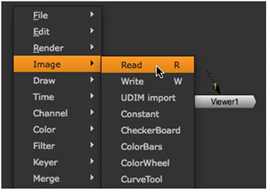
For this project, you need to import a few image sequences for the foreground elements and a background plate.
| 1. | Click on a blank space in the Node Graph. This ensures none of the nodes are selected. |
| 2. | Click the right mouse button over the Node Graph and choose Image > Read (or press R over the Nuke window). |
TIP: Pressing R with an existing Read node selected, opens the file browser at the location specified by that node.

A file browser appears. This is where you select the image file you want to import. When you browse through your directories from this window, Nuke displays sequentially-numbered files as one item in the directory.
| 3. | Browse to the Nuke_Tutorials/CompBasics/ directory. |
| 4. | Add a bookmark to this directory. Right-click over the list, on the left side of the file browser window, and choose Add from the menu. |
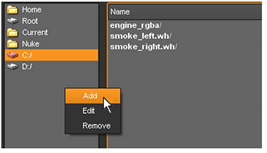
| 5. | Type a name for the bookmark or keep the default, which is the directory name. Then click OK. |
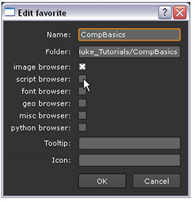
| 6. | Open the engine_rgba directory, select the engine.v01.####.exr image sequence, and click Open. |
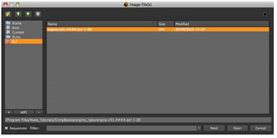
Nuke retrieves the image sequence and displays it as a thumbnail on the node. The Read control panel displays the resolution and the frame range for the image.
NOTE: Nuke reads images from their native format, but the Read node outputs the result using a linear color space. If necessary, you can change the Colorspace option in the Read node’s control panel, or insert a Color > Colorspace node to select the color scheme you want to output or calculate.
| 7. | Drag a marquee (hold down the left mouse button while dragging) around the Background and Ramp nodes to select them. Then drag them to the right to make room for additional nodes. |
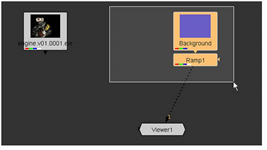
| 8. | Choose Image > Read from the right-click menu to import another image sequence. Use the file browser to select the image sequence stored in Nuke_Tutorials/CompBasics/smoke_left.wh/smoke_left.####.rgba. |
| 9. | Add one more Read node and retrieve the image sequence stored in Nuke_Tutorials/CompBasics/smoke_right.wh/smoke_right.####.rgba |
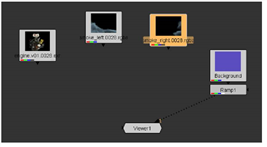
| 10. | Arrange the nodes, as shown above, to allow some room to create the connections for the node tree. |